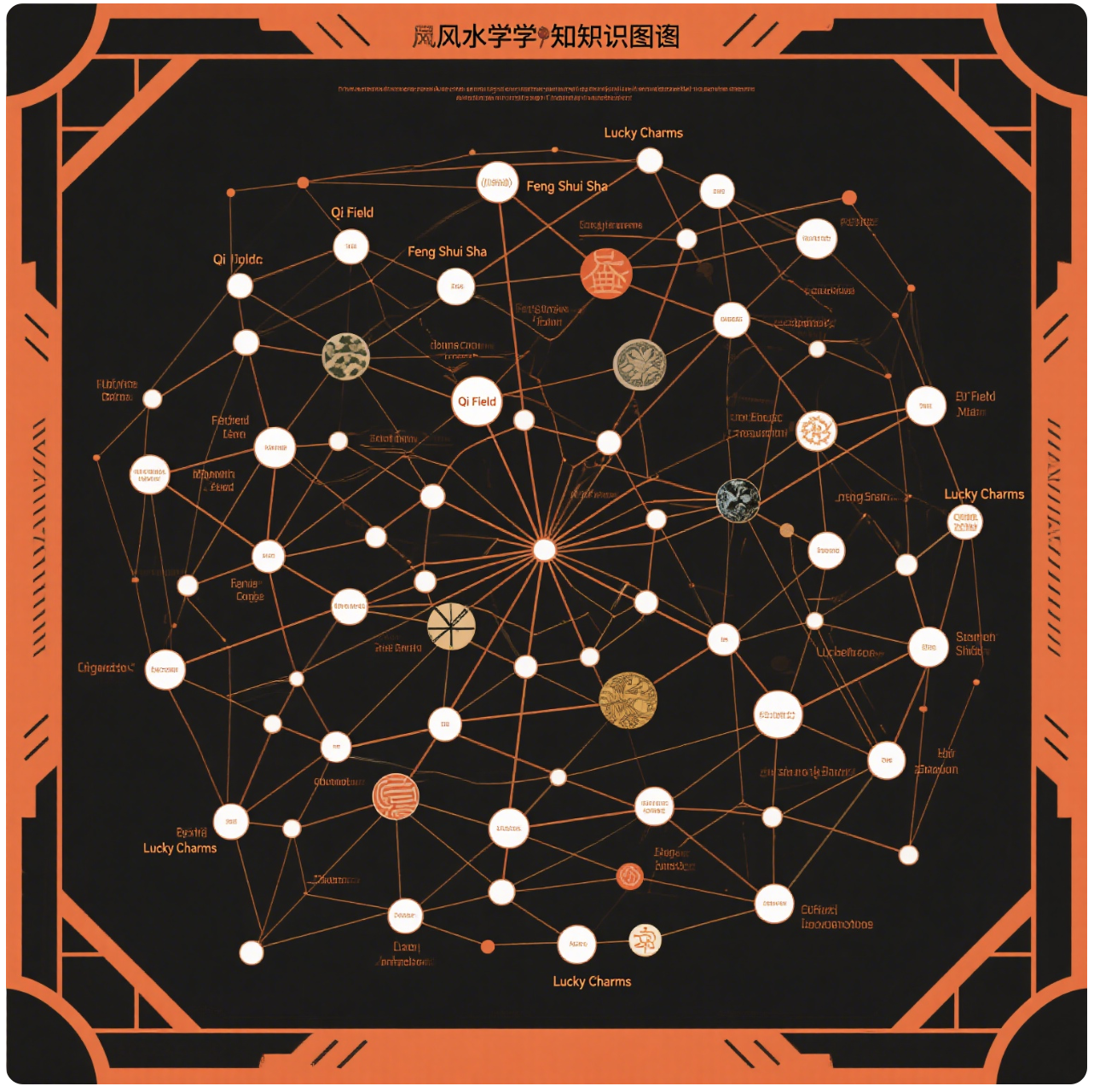Feng Shui Knowledge Mapping and Framework
First, the two core schools of Feng Shui
- Situation School
Core theory:
The geographical situation of mountains and rivers as the core, focusing on the field survey of dragons, points, sand, water and direction
Main branches and schools:
- Mountain range school (observation of terrain ups and downs);
- Image school (mountain anthropomorphism);
- Form method school (combining orientation and form effect).
Representative works and characteristics:
Representative works “Shaking the Dragon Scripture” and “Burial Scripture”, emphasizing “hiding the wind and gathering the qi”, suitable for mountain site selection.
- Li Qi School
Core theory:
Combined with the principles of I Ching, yin and yang, bagua, star of the sky and other projections of changes in the qi field.
Main branches and schools:
- Eight House School (house life matching)
- XuanKong Flying Star School (Nine Palace Flying Star and YuanYun)
- Triad School (Dragon, Water and Three Harmonies)
- Qi Men School (Qi Men Dun Jia combined with Feng Shui)
- Numerology school (combination of eight characters and feng shui)
Representative works and characteristics:
Representative works “Xuan Kong Secret Purpose” “Eight Mansions Mingjing”, need compass orientation, complex but refined

Second, the core elements of Feng Shui
Dragon Vein: the direction of the mountain range and the earth’s energy veins, with the Kunlun Mountains as the ancestral mountain, divided into the north, center and south of the three dragons.
Points: the convergence point of the earth’s gas, the requirements of the “hidden wind and water”, divided into a small Mingtang, in Mingtang, Mingtang, large Mingtang.
Sand: the hill guarding the cave, including the Green Dragon (left), White Tiger (right), Chao Shan (before), Xuan Wu (after).
Water: the direction and shape of the water flow, need to be “embraced with love”, avoid direct charge or reverse bow.
Toward: the house tomb sitting direction, combined with the compass orientation and terrain adjustment, such as “sitting in the north toward the south” is auspicious.
Third, the practical application of feng shui
Principles of site selection: mountain heavy hidden wind (mountain embracing water), plains heavy water (water around the gas gathering)
Layout taboos: to avoid the heavenly chopper, the road, the lonely Yang room and other evil places
Adjustment methods: repair the Hall, adjust the orientation of doors and windows, the use of five elements of the items to eliminate the damage.
